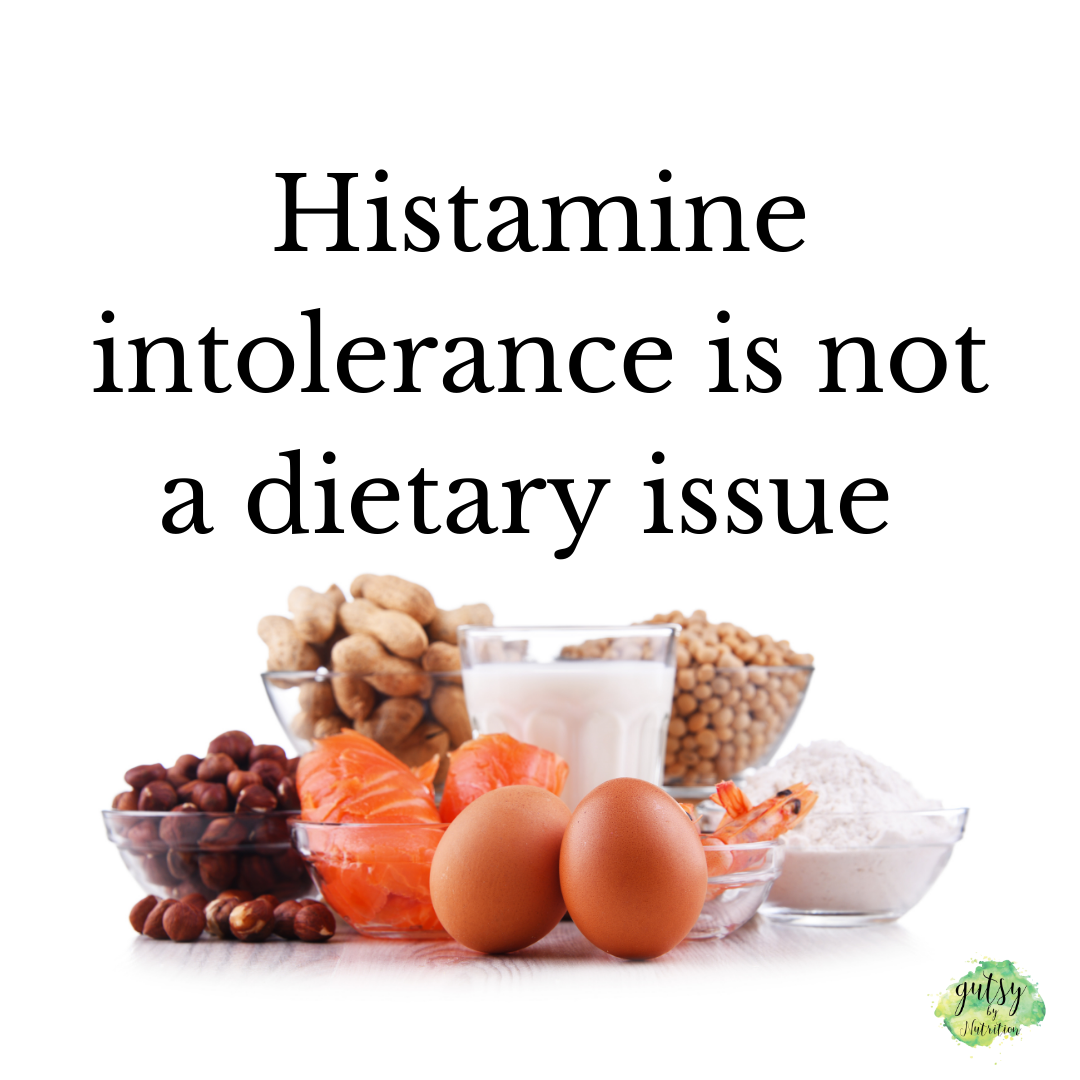Histamine intolerance is not a dietary issue
Histamines are a chemical messenger and neurotransmitter. Histamine is involved in immune messaging, the inflammatory response and digestion (excreting ever-important stomach acid).
We have four types of histamine receptors located all over our body, from our skin and intestines, to our central nervous system, bone marrow and white bloods cells to our spleen.
Histamine is high – where circulating levels are excessive - with food allergies, cystitis, flushing disorder, pregnancy and polychythaemia. It’s low with fatigue, low productivity, tension headaches, mild depression and weight gain.
Many people think histamines are a sensitivity to certain foods – this is incorrect
Food sensitivities are IgG or IgM reactions. They’re delayed and happen over several days, and don’t activate the histamine pathway.
Food allergies, on the other hand, are an IgE or allergic reaction to a protein found in a food, which is almost immediate occurring within 2-3 minutes. With allergies, mast cells activate, releasing chemical mediators that include histamines.
However, where non-allergic food reactions involving histamines commonly occur is with the loss of oral tolerance.
Oral tolerance and gut health
Oral tolerance is the immune system’s way of tolerating acceptable foods while also dealing appropriately with bacteria and other harmful substances. This is a kind of complex balancing act. When you lose it, your immune system becomes too sensitive, no longer responding to foods in a normal way.
This happens if you have low gut immunity due to poor diet and lifestyle, long-term stress, drugs and antibiotics, poor upper digestive function, and environmental toxins like mould or chemicals, all of which can lead to gut bacteria, yeast and/or parasitic infections.
Low gut immunity means low levels of secretory immunoglobulin antibodies, or SIgA. This means dendritic cells are forced to step in and defend your health. Their role is to decide which proteins the immune system should attack. While they're always there, they can become over-vigilant and, hey presto, you start to develop sensitivities to foods that your immune system would usually see as friendly.
If you’re not sure you whether you have a histamine intolerance, take an anti-histamine (natural or chemical). If your symptoms improve, you likely have histamine issues.
Then you can investigate if you have food allergies or have lost oral tolerance, or whether there’s some other underlying problem causing this inflammatory response. This might include adrenal fatigue, nutrient deficiencies, excess alcohol intake and too much oestrogen.
But most often, histamine intolerance is due to a gut microbiome infection i.e. an overgrowth of bad bacteria, low levels of good bacteria, parasites, yeast infections and/or HPylori.
Whatever the initial cause, healing your gut is a key way to improve your systemic inflammation and immunity, and reduce histamine reactions. Our gut is, after all, where 70-80% of our immunity lies.
This will likely involve lowering your intake high histamine foods for a period of time to lower inflammation while you deal with the root cause. It’s not possible to eliminate all histamines, and the problem of excess histamines is a threshold one that’s bio-individual and can change depending on many factors. It’s important to understand that the effect of histamines can be cumulative, like a bucket filling until it overflows and you react. The aim during the healing phase is to ensure it never does.
Also, you can’t solve histamine issues in a vacuum. The body is a complex system of chemical reactions, and only with excellent nutrition can histamine sensitivity be controlled over the long term. And just because a food is low histamine it doesn’t mean it’s healthy. Histamine intolerance is a sign of poor health so it will pay to eat to get better.
What are high histamine foods?
Reducing histamines is not as simple as cutting out high histamine foods. You also need to consider histamine releasing foods, DAO blocking foods and other irritant foods that release histamines.
High histamine foods includes alcohol, fermented foods, vinegars, cured foods, cheese and dried fruit, smoked foods, some nuts and vegetables like walnuts, peanuts, avocadoes, tomato, spinach and more
Histamine food levels also fluctuate depending on the food’s age and storage methods e.g. a food might be low in histamine to begin with but high histamine as it ages, and some storage methods such as freezing stop histamine development
Some foods do not have high histamine levels but contain compounds that provoke histamine release. Such foods include bananas, pineapple, shellfish, chocolate, cow’s milk and papaya
Some foods are Diamine Oxidase (DAO) blockers, which cause histamine levels in the blood to rise. These foods include black and green tea, alcohol and energy drinks
Some foods may contain oxalate (oxalic acid), an irritant that can trigger histamine release thereby causing the same symptoms as histamine This includes legumes, millet, raspberries, rhubarb, buckwheat and potatoes
Remember also that foods can contain pro-inflammatory elements other than histamines e.g. grains, un-soaked legumes, sugars and refined carbohydrates
To reduce histamines
Cut out or reduce canned, ripened, fermented foods and ready meals
Only buy and eat fresh products
Put foods immediately into the refrigerator, especially meat
Keep your food preparation area clean
Find your own histamine threshold, which may change over time
Learn to cook. It’s healthier, cheaper and fun
Find the root cause
Ongoing sensitivity to histamines is a sign you haven’t dealt with the root cause. Eating low histamine should not be a permanent lifestyle, but a temporary diet aimed at symptom relief while you deal with underlying problem/s. Healing your gut is a great starting place.

